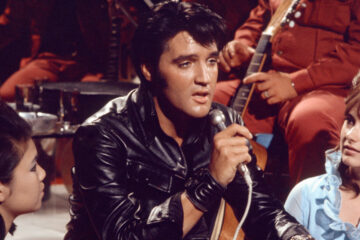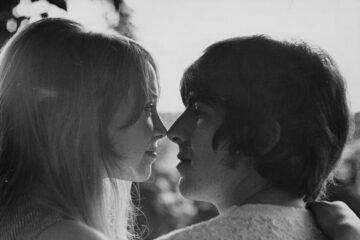‘Come Together’ is one of the standout moments on The Beatles‘ album Abbey Road. One of the final songs to be recorded, thanks to John Lennon rehabilitating from his traumatic car crash, the track has become a rich part of the Fab Four’s iconography. However, the fact that Lennon leant so heavily on one of his idols from childhood, Chuck Berry, meant the duck-walking guitarist took the bespectacled Beatle to court.
The song may well be a part of the Fab Four’s legend, but it was also very nearly a part of pro-drugs activist Timothy Leary’s. But what makes it even more remarkable is that among the hundreds of songs the band wrote, it was one of John Lennon’s favourites. Speaking to David Sheff about the track, he once said: “It’s one of my favourite Beatle tracks, or one of my favourite Lennon tracks, let’s say that. It’s funky, it’s bluesy, and I’m singing it pretty well. I like the sound of the record. You can dance to it. I’ll buy it!”. However, that was nearly all dampened by the great Chuck Berry.
The track was initially conceived by Lennon as a politically charged number aimed at rallying the counterculture movement around the psychologist, writer, and pro-drugs activist Timothy Leary. The song was composed for Leary’s campaign to stand against Ronald Reagan as the governor of California. Leary and Lennon met briefly as part of his and Yoko’s Bed-In for Peace and were part of the recording of ‘Give Peace A Chance’, even finding himself checked in the lyrics.
Afterwards, Lennon explained that he would help Leary’s campaign with a song and with his slogan set as ‘Come together, join the party’, and the task began. Lennon ended up sending Leary several ideas on a demo tape, but things would soon come to an end as Leary was imprisoned for cannabis possession. It left Lennon free to record the new demos with The Beatles, and the classic song wouldn’t go to waste.
That didn’t mean that Leary wasn’t upset with the outcome of losing his campaign song, however: “Although the new version was certainly a musical and lyrical improvement on my campaign song, I was a bit miffed that Lennon had passed me over this way,” Leary told Stever Turner in A Hard Day’s Write.
Adding: “When I sent a mild protest to John, he replied with typical Lennon charm and wit that he was a tailor and I was a customer who had ordered a suit and never returned. So he sold it to someone else.”
In Lennon’s opinion, he had done nothing wrong, as he explained: “The thing was created in the studio. It’s gobbledygook; ‘Come Together’ was an expression that Leary had come up with for his attempt at being president or whatever he wanted to be, and he asked me to write a campaign song. I tried and tried, but I couldn’t come up with one. But I came up with this, ‘Come Together’, which would’ve been no good to him – you couldn’t have a campaign song like that, right?”
The lyrics may have been gobbledygook, but the song’s musical structure leant heavily on Chuck Berry’s 1956 song ‘You Can’t Catch Me’ with both songs containing the lyric “here comes old flat-top…” It was enough to send Berry’s team running after Lennon with an empty chequebook. Later seen as an admission of guilt, Lennon settled out of court with Berry’s publisher Morriss Levy, with John even agreeing to record more songs owned by Levy and saw Lennon pick up a few for his album Rock ‘N’ Roll.
“‘Come Together’ is me—writing obscurely around an old Chuck Berry thing. I left the line ‘Here comes old flat-top.’ It is nothing like the Chuck Berry song, but they took me to court because I admitted the influence once years ago. I could have changed it to ‘Here comes old iron face,’ but the song remains independent of Chuck Berry or anybody else on earth.”
It seemed as though McCartney was well aware of the song’s similarities to Berry, “He originally brought it over as a very perky little song, and I pointed out to him that it was very similar to Chuck Berry’s ‘You Can’t Catch Me’,” he claims in Barry Miles Many Years From Now. “John acknowledged it was rather close to it so I said, ‘Well, anything you can do to get away from that.’ I suggested that we tried it swampy—‘swampy’ was the word I used—so we did, we took it right down. I laid that bass line down which very much makes the mood. It’s actually a bass line that people now use very often in rap records. If it’s not a sample, they use that riff. But that was my contribution to that.”
The Beatles were known as musical magpies, happy to pick and choose the shiniest bits of music, turn them around and add them to their own work. Whether that shows the band were eager to gather up the best of the world’s music and patchwork it together or that they were cultural thieves will likely never be resolved. However, what we do have in the meantime is one of John Lennon’s finest tracks delivered in a simply stunning way.



